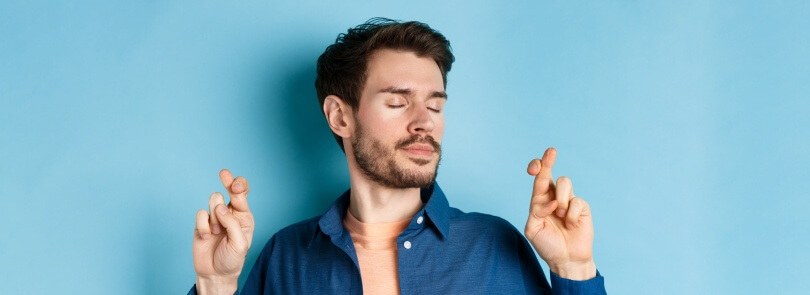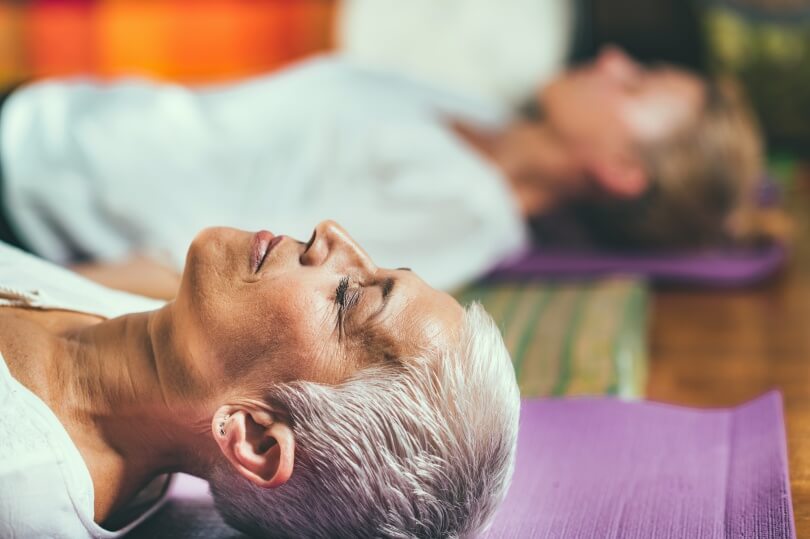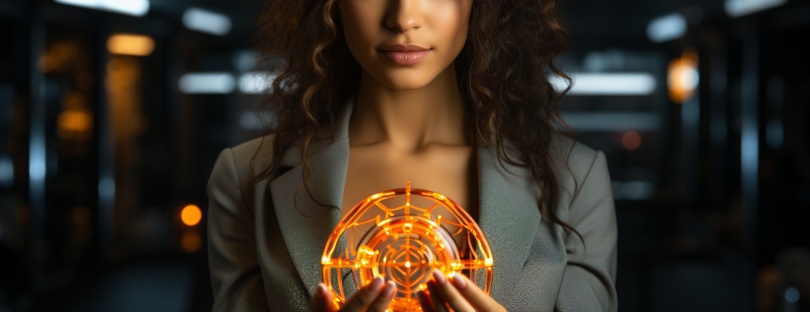Table of Contents
Understanding the Subconscious Mind

Defining the Subconscious Mind and Its Functions
Guided imagery and mental imagery therapy tap deeply into the subconscious mind, profoundly influencing our habits and behaviors. Understanding this aspect of our psyche is crucial for implementing positive changes and enhancing personal growth.
Understanding the Subconscious Mind
The subconscious mind operates below the level of conscious awareness, handling everything from bodily functions to deeply ingrained habits. It’s this part of our psyche that engages with processes like visualization healing and subconscious visualization, playing a pivotal role in our mental and emotional landscapes.
- Subconscious mind acts as a reservoir of our memories and experiences, influencing our reactions and behaviors without our conscious awareness.
- Guided mental exercises can effectively reprogram the subconscious mind, aiding in the development of new, healthier habits.
- Techniques such as guided imagery allow individuals to visualize successful outcomes, embedding these positive visions directly into their subconscious.
The Power of Habit Formation
Habits are repetitive behaviors that we perform automatically, often initiated by cues in our environment that serve to trigger these actions. The process of habit formation is intimately linked with the subconscious mind, which stores and enacts these behavioral patterns.
By understanding how habits are formed and maintained through subconscious processes, techniques like visualization healing become invaluable tools. For example, someone struggling with anxiety might use mental imagery therapy to cultivate a calm response in stressful situations, gradually rewriting their instinctual reactions.
In essence, leveraging the subconscious through guided imagery and mental exercises not only helps in overcoming negative habits but also in cultivating a constructive mental framework, leading to sustained personal growth and well-being.
The Role of the Subconscious in Habit Formation
The fascinating world of the subconscious mind plays a pivotal role in shaping our daily behaviors through habit formation. Studies in the fields of guided imagery and subconscious visualization provide profound insights into how repeated mental imagery can influence our routines and habits.
The Impact of Subconscious Visualization
Understanding subconscious visualization involves delving into how mental exercises strengthen neural pathways associated with specific behaviors. For example, athletes often use visualization healing to mentally rehearse physical moves which later translate into more refined real-world actions. This method also applies to everyday habits; envisioning yourself succeeding in a new health routine can significantly increase your actual adherence to it.
Practical Steps in Subconscious Training
To harness the power of the subconscious mind in forming new habits, consider integrating these steps:
Implementing these practices can lead to significant changes in behavior, reflecting the immense potential of subconscious interventions in personal development. By engaging in guided imagery and regular subconscious exercises, individuals can shape their long-term habits and overall life trajectory.
Guided Imagery for Subconscious Wellness

Techniques and Methods of Guided Imagery
Guided imagery and visualization healing are integral techniques in exploring the depth of the subconscious mind and influencing habit formation. These methods utilize subconscious visualization and mental imagery therapy to foster significant psychological changes, often supporting personal growth and healing. Guided mental exercises are particularly beneficial in customizing one’s mental landscape, effectively sculpting our inner world to enhance our outer realities.
Key Techniques in Guided Imagery
Real-world Applications
In real-world settings, techniques such as subconscious visualization and guided mental exercises have been effectively applied in various fields including psychology, sports, and education. For instance, athletes use mental imagery therapy to enhance their athletic performance by visualizing successful execution of sports moves. In the educational sector, students employ guided imagery to improve concentration and reduce anxiety during exams.
The transformative power of mental imagery therapy lies in its ability to remodel our subconscious patterns and instigate a positivistic approach to habit formation and personal development. By engaging the subconscious mind in a deliberate and focused manner, individuals can promote profound and lasting change in their daily lives and behaviors, underscoring the potent influence of guided imagery and visualization healing within the realms of personal development.
Practical Examples and Real-Life Success Stories
Subconscious visualization and guided imagery are powerful tools that have manifested profound transformations in individuals’ lives. These techniques leverage the capabilities of the subconscious mind to form habits and foster mental and emotional healing. By delving into renowned case studies and established academic research, we can understand how visualization healing and mental imagery therapy positively impact personal development.
For instance, a study conducted at a leading university explored the effects of guided mental exercises on stress reduction in students. Participants engaged in daily sessions of subconscious visualization, focusing on peaceful, positive images. Over the course of eight weeks, these students reported significant reductions in stress and anxiety levels, illustrating the efficacy of these techniques in real-world scenarios.
Applications in Professional Settings
Subconscious mind techniques are not confined to personal development; they extend to professional growth as well. A notable case from a corporate training program shows how employees used visualization healing to enhance their leadership skills. By visualizing successful conflict resolution and effective communication, individuals were able to exhibit these behaviors in high-stake situations, leading to improved workplace dynamics and productivity.
- Visualization techniques are utilized to prepare athletes for competitions, focusing on positive outcomes to enhance performance.
- Guided imagery is incorporated in therapeutic settings to help patients overcome PTSD, by replacing traumatic memories with constructive visualizations.
- Subconscious visualization strategies are applied in academic settings to boost students’ confidence and academic performance.
Enhancing Everyday Life Through Visualization
Everyday scenarios also provide ripe opportunities for applying these methods. From enhancing public speaking skills to fostering healthier lifestyle choices, guided mental exercises empower individuals to enact significant changes in their lives through consistent practice and mental discipline.
By integrating principles of subconscious mind and habit formation into daily routines, individuals can unlock their potential and achieve personal and professional goals. Through persistent application and understanding of these psychological practices, profound growth and healing are attainable.
Summary
Guided Imagery for Subconscious Wellness taps into the profound capabilities of the subconscious mind to influence our habits and behaviors. Techniques such as guided imagery, visualization healing, and mental imagery therapy are central to mental and emotional growth. They enable the formation of positive habits through the repeated visualization of successful outcomes, deeply conditioning our subconscious.
Key Insights on Subconscious Mind and Habit Formation
By integrating guided imagery into daily routines, individuals can harness the power of their subconscious to achieve significant life improvements. Real-world applications in sports, medicine, and education illustrate the effectiveness of these techniques. Athletes improve performance through mental rehearsals, patients overcome PTSD with positive visualizations, and students enhance learning outcomes through focused imagery exercises. This comprehensive approach not only aids in overcoming negative habits but also promotes a robust mental framework for continuous personal development, proving the transformative power of Guided Imagery for Subconscious Wellness.
FAQ – Guided Imagery for Subconscious Wellness
How does guided imagery specifically target and help in healing the subconscious mind?
Guided imagery works by deliberately using the imagination to visualize specific, positive images and scenarios, which can positively influence the subconscious mind by replacing negative or harmful thought patterns. This practice can help condition the subconscious to adopt healthier, beneficial behaviors and emotional responses, effectively supporting mental and emotional healing. It is similar to programming a computer, where guided imagery scripts direct the subconscious towards improved health and wellness, helping individuals to manage stress, alleviate pain, and enhance overall life satisfaction through repeated practice.
What are some specific steps one can take to effectively use guided imagery for healing the subconscious?
Guided imagery for healing the subconscious involves vividly picturing a calming and restorative scene in your mind, engaging all senses to deepen the tranquil experience. A good practice is to consistently integrate this visualization process into your daily routine, particularly during morning or pre-sleep rituals, as these times are excellent for subconscious influence. Enhance the imagery with specific details that personally resonate, like imagining the sound of waves or the smell of a forest, to facilitate deep emotional and psychological healing.
What are the potential benefits of using guided imagery to address and heal subconscious issues?
Guided imagery is a powerful tool that taps into the subconscious mind, allowing individuals to access and address deep-seated emotional and mental blocks. By visualizing positive outcomes and scenarios, it can facilitate a profound emotional and psychological healing process, effectively altering negative thought patterns and behaviors. This technique not only soothes the mind but also empowers individuals to enact change in their lives by reinforcing new, healthy habits and attitudes.








